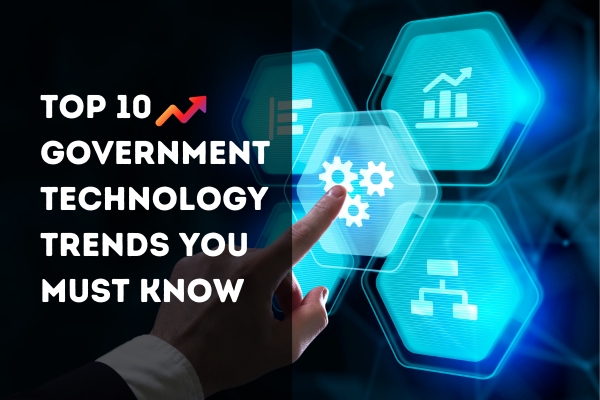In the ever-evolving landscape of governance, the integration of technology has become a paramount force driving efficiency, transparency, and citizen-centric services. As we step into 2024, governments worldwide are embracing transformative technologies that promise to redefine the way they operate. In this article, we delve into the top 10 government technology trends that are poised to shape the future of public administration.
What Government Technology Trends Are Currently Dominating the Landscape?
Artificial Intelligence (AI) and Machine Learning (ML)
Governments are increasingly turning to the power of AI and ML to harness the potential within vast datasets. These technologies are revolutionizing decision-making processes, offering predictive analytics to inform policy, optimize public services, and enhance the overall efficiency of government operations. From healthcare management to law enforcement strategies, AI and ML are becoming invaluable tools in the public sector’s arsenal.
Internet of Things (IoT) in Public Services
The Internet of Things (IoT) is becoming integral to public services, enabling governments to create more efficient and citizen-centric environments. Smart waste management, intelligent transportation systems, and environmental monitoring are just a few examples of how IoT devices are improving operational efficiency while contributing to the creation of sustainable urban spaces.
Open Data Initiatives
Open-data initiatives are being adopted by governments increasingly frequently in an effort to encourage cooperation and openness. The public’s ability to access non-sensitive data in local government asset management software promotes accountability and facilitates cooperative issue resolution. By allowing outside developers to create apps utilizing data on government assets, open data programs also encourage creativity.
Robotic Process Automation (RPA)
Robotic Process Automation is revolutionizing administrative processes by automating repetitive and rule-based tasks. Governments are deploying RPA to handle data entry, document processing, and other routine tasks, allowing human resources to focus on more complex and strategic responsibilities. This not only improves efficiency but also reduces operational costs.
Cybersecurity Prioritization
With the increasing frequency and sophistication of cyber threats, governments are making significant investments in robust cybersecurity measures. Advanced threat detection, encryption technologies, and secure cloud infrastructure are at the forefront of efforts to protect sensitive data. Cybersecurity is no longer a mere aspect but a fundamental pillar in the architecture of modern government operations.
Digital Identity and Biometrics
Governments are actively adopting digital identity solutions and biometrics to enhance security in various transactions. Facial recognition, fingerprint scanning, and other biometric technologies are being employed to authenticate identities, reducing the risk of fraud and ensuring the secure execution of government services.
Blockchain for Enhanced Security
Blockchain technology, known for its decentralized and secure nature, is gaining prominence in government operations. Governments are employing blockchain to secure sensitive data, streamline administrative processes, and ensure the integrity of transactions. This not only enhances security but also fosters a level of transparency crucial for building public trust in government institutions.
5G Technology Implementation
The widespread rollout of 5G networks is transforming the connectivity landscape. Governments are leveraging 5G to facilitate real-time data sharing, support smart cities, and enable the deployment of autonomous vehicles. The high-speed and low-latency characteristics of 5G are unlocking new possibilities for innovation in government services, signaling a shift toward more connected and responsive governance.
Cloud Computing for Scalability
The migration of government infrastructure to the cloud is gaining momentum. Cloud computing offers scalability, flexibility, and cost-effectiveness, enabling seamless collaboration across government departments. This shift is fostering innovation and responsiveness in government operations, as well as facilitating the storage and accessibility of vast amounts of data.
Augmented Reality (AR) for Training and Simulation
Augmented Reality (AR) is finding applications in government training programs and simulations. Providing immersive experiences for personnel in fields such as defense, healthcare, and emergency response, AR enhances learning outcomes and prepares government professionals for real-world scenarios. This technology is proving invaluable in ensuring that personnel are well-equipped to handle complex situations with precision and confidence.
Conclusion
As governments continue to navigate the complexities of the modern world, the integration of these top 10 trending technologies is reshaping the way they operate and interact with citizens. From the adoption of AI and blockchain for enhanced decision-making and security to the implementation of 5G and IoT for improved connectivity and efficiency, these are propelling nations toward a more connected, efficient, and responsive future. Staying informed about these technological advancements is crucial for citizens and policymakers alike, as it empowers them to actively engage in shaping the trajectory of modern governance and ensuring a technologically-driven, inclusive future for all.




